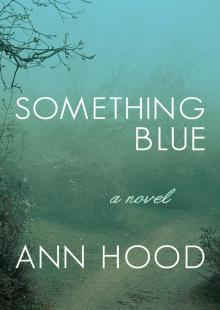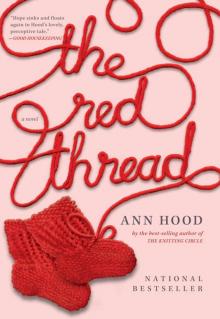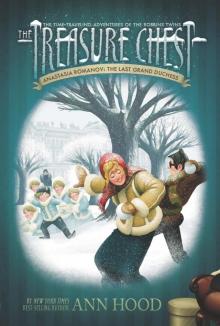Kitchen Yarns Read online
Page 13
Annabelle does it all with such care it almost breaks my heart. And then in the crucial final seconds as she folds one side over the other, it tears, and she gasps, “It’s ruined! Everything’s ruined!” What I know from years of making omelets is that an omelet can always be fixed, even if that means in the end it becomes a plate of delicious scrambled eggs. I take the spatula, say, “Watch,” and pat the broken eggs over the tomatoes and cheese. Then I slide it upside down onto the plate—a perfect golden omelet. Annabelle’s eyes light up. “It’s beautiful,” she says. She says, “I will make you an omelet every day.”
Before I take my first bite, she touches my hand. “Now make me one?”
I crack two eggs, and begin again.
THE PERFECT OMELET
If there’s one thing everyone should know how to make, it’s an omelet. The dish is versatile, good for breakfast, lunch, or dinner. It can be served alongside a green salad dressed with a mustardy vinaigrette or in the style preferred by my old favorite Greenwich Village restaurant—with French fries. Omelets are a great way to use up leftovers because anything can go in one. Brickway, a restaurant in Providence, even has a chili omelet. I like mine simpler, with diced ham and cheese. And I am a sucker for what I call a diner omelet, like the one they make at my corner diner, Bus Stop, in New York City (at the corner of Bethune and Hudson, if you’re in the neighborhood), which is filled with diced ham and American cheese. This recipe is for the most basic omelet. The rest is up to you and your imagination.
Makes 1 serving
INGREDIENTS
2 or 3 eggs; I like extra-large
Pinch of salt
1 tablespoon unsalted butter
A handful of diced ham
2 slices of American cheese or a handful of fancy cheese like Gruyère or aged cheddar, shredded
In a small bowl, beat the eggs and salt with a fork until they’re yellow and frothy.
Melt the butter over medium heat in a nonstick 10-inch pan (too big a pan will result in scrambled eggs, too small a pan in a mess) until bubbly.
Pour in the eggs so that they spread out all over the pan.
With a rubber spatula, keep lifting one edge of the eggs and allowing the still liquidy part to flow underneath, until all of the eggs have set.
Run a spatula around the edges to loosen.
Add ham and cheese on one half of the eggs only, then quickly fold the other half on top of it with that spatula.
Have your plate ready and tip the now-folded omelet onto it so that the bottom that was sitting in the pan is now the top of your omelet.
You have just made a perfect omelet!
IKEA Life
I am in IKEA starting my life over. In my hands: a pad and one of those little pencils that brings to mind miniature golf. In front of me: lamps, bedding, desks, rugs, dining room tables, beanbag chairs, media centers, cabinets, towels, candles, all of it with vaguely Scandinavian names. The bookcases are Hemnes, Kallax, Tomnas, and they are built so that you can reconfigure them—stack them tall or long, symmetrical or not, wide or narrow. I clutch my tiny pencil, dizzy, queasy, confused. In my old life, the one I had for almost twenty-five years, the one I had until last week, my bookshelves were built-in and covered three walls of a room painted a soothing Bashful Blue. On a beautiful June day all those years ago, with sunlight streaming through the paned windows, I’d stood on a ladder and lined up my books alphabetically on those shelves. Alice Adams to Herman Wouk. Now I need to decide between types of shelving with names I can’t remember, and long serial numbers, and too many options for how to set them up just to hold my books.
I think of my new empty home waiting for these shelves, and my books, and me. Soaring ceilings, cement floors, big industrial silver pipes, and windows so big that the shades open and close with pulleys. Hemnes, Kallax, Tomnas. Black, white, gray. Across from the shelves are fake living rooms, set up to showcase how the IKEA merchandise can look in your own home. One living room is all red and gray, with modern low furniture. Another is moss green and beige, with inviting throws and pictures of ferns. Another a blue that reminds me of my own lost Bashful Blue, and it is this one that I go to, leaving my pad and pencil on a table I pass, dropping onto the sectional sofa (Soderhamn) and resting my weary head on the striped pillow (Strandkål).
I close my eyes. As I’ve been told it happens at the end of life, my old life passes in front of me. There I am in Greenwich Village black—jeans, T-shirt, leather biker jacket. There I am marrying the first wrong guy at a big wedding under a tent in a park whose name I’ve long forgotten. There I am falling in love with another wrong guy, who wears Bermuda red shorts and belts with whales on them. I know—what was I thinking? But we cooked artichokes together and drank a big Tuscan red wine. Once we went to a small candlelit corner restaurant for squid ink pasta. He brought me armfuls of tulips. There I am marrying him on an unusually warm February day, me in a black velvet dress and him in a Nicole Miller tie festooned with champagne bottles and dancing girls. There I am with a baby and then another baby and then a family: slicing cucumbers and peeling apples and tying shoes and packing backpacks and sitting through swimming lessons and ballet lessons and reading Roald Dahl novels and getting covered with sticky kisses.
Oh, this movie of my life.
Even as I lie there on the Bashful Blue Söderhamn sofa I recall Delmore Schwartz’s story “In Dreams Begin Responsibilities.” He wrote that story during one weekend in July 1935. The title comes from the epigraph for Responsibilities, a volume of poetry by Yeats. In the story, a young man dreams he is in a movie theater and realizes the film he’s watching is actually documenting his parents’ courtship. Eventually, he gets upset and begins to yell at the screen to try to stop them from getting married. “Don’t do it! It’s not too late to change your minds, both of you. Nothing good will come of it.” Several times he breaks down, and he is finally dragged out of the theater by an usher. At the end of the story, the man wakes up and realizes it is the snowy morning of his twenty-first birthday.
Would I stop the film of my own courtship and second marriage if I could? I wonder, my head still down, shoppers bustling around me with their tiny pencils and notepads, designing their lives.
There was the courtship: fast, intense, dizzying.
And there was the marriage: slow, silent, bewildering.
Before him, there was the other marriage in the park. Looking back, I see how brief it was. Five years. A moment, really. I wouldn’t undo it. Or perhaps after the span of so many decades, it doesn’t matter if it was done or undone. We could never agree on where to live and bounced around, more or less dissatisfied, from apartment to rented house, from city to country. When we finally landed back in Manhattan, where I’d wanted to be all along, we split up. There were tears and sadness, but mostly I remember sitting at the dining room table and dividing up our wedding presents. He took what his side gave us, I took what mine gave. Afterward, I felt relieved.
Before him, there was my great love, a man I met on a flight from San Francisco to JFK when I was a flight attendant. He was moving to New York City that very day, all of his belongings in the belly of the plane. We watched the sunset from his window at 47F, dramatic pinks and reds. “You probably are used to seeing this,” he said. “I’m not,” I told him, leaning across the empty middle seat to see better.
We ran out of short ribs on that flight, and when I told the passenger a few rows ahead of 47F that we had only lasagna left, he began to scream and pound the unit that had the SEAT BELT and NO SMOKING signs on it. He pounded so hard that the overhead compartment popped open and someone’s coat fell out. “You gave all of the short ribs to your friends!” he yelled. “You’re hiding them!” The pilot was notified, and two male flight attendants restrained the man with special restraints we kept up front for just this kind of problem. I was told to stay in the back of the plane, away from him. When we landed, I had to go to the front door and meet the authorities to issue a report. But then I w
ouldn’t get to talk to 47F again. So I scribbled a note on a cocktail napkin: Dear 47F, If you want someone to show you around the city, this is my phone number. Your flight attendant, Ann. I managed to hand it to him as he left the plane, his face brightening with surprise. “For me?” he asked. That night my phone rang. “This is 47F,” he said.
I would not stop this film, I thought from my perch in IKEA. Except I had, after Josh and I spent five years together, and then again after my first marriage ended and we briefly reunited. During that second break, I met the man who would become my second husband. What followed was a brief, confusing time. The chains of old love and the thrill of new love. My boyfriend moved to San Francisco to rediscover himself. The man who I would marry said, “I dreamed we had a son.” He said, “Come back to Rhode Island with me.” He said, “I love you more than I’ve ever loved anyone.”
My friend Susie auditioned for a famous acting conservatory and got accepted but chose not to go. “I should have gone,” she always says, shaking her head with sadness and regret.
My friend Rosemary refused to take a job writing obituaries at a small-town newspaper. “If I had only taken that job,” she says, “I would have become a journalist.”
If I had not gone to give that talk where he followed me all night, smiling and confident. If I had gone to San Francisco with 47F. If I had said no.
A FAMILY, all worried faces and concern, is staring at me, the woman on the sofa in the fake living room in IKEA.
“I felt weak,” I tell them.
But really, I am here starting a new life because I was strong, not weak. Weak was staying and pretending. Weak was crying myself to sleep at night. Weak was pacing the two-hundred-year-old wooden floors at three in the morning, trying to decide.
The family—husband, wife, two wide-eyed children—wait until I stand up before they walk away. I walk away, too. Out of the fake living room, past the bookshelves and lamps. IKEA is a labyrinth—I find myself traveling in circles, passing the shelves again, the Bashful Blue living room. Once I walked a prayer labyrinth in the cathedral at Chartres, France, with the man who was my second husband. I had one baby asleep in a Snugli on my chest, the other clutching my hand. Beautifully preserved, that thirteenth-century, forty-two-foot-wide labyrinth fills the cathedral’s nave with its eleven concentric circles and six-lobed rosette at the center. Although no one has been able to document some of the mysteries of the labyrinth—was there once a minotaur in the center? was it a tomb? or a memorial?—what is known is that it symbolized the long, torturous path the pilgrims followed to arrive there.
FOR SIX MONTHS I stayed dizzy, drunk and stupid on love. I gave up my apartment in Greenwich Village and took my cats and myself to Providence. I believed everything. Everything. I would never have to teach or do anything except write. I would go to banquets and balls. He had never loved anyone so much.
THE YEAR MY husband left for a sailing trip in the Caribbean and missed our son’s opening night of Oliver!, where he sang and danced, an orphan and a pickpocket, and our daughter’s debut ballet performance as a snowflake in a white tutu? The call in the middle of the night and his hushed words: I can’t talk, she’s here? The hours he was late, hours and hours. His phone died. He’d misunderstood. He had meetings. All the eye rolling, the silent judgments, the words unsaid, the tears? Mine. His. “You will be sorry if you do not do what you should do,” the usher tells the narrator in the Delmore Schwartz story. Is this what held me there? What I should do was stay, pretend I didn’t see what I saw, pretend I didn’t know what I knew?
I developed insomnia. High blood pressure. Psoriasis.
But how I loved the idea of it: a family. Christmas stockings hanging from a mantel, our names stitched on them crookedly by me. Family trips to national parks and national monuments, to the homes of presidents.
Even as I yell at the screen showing my life story, the children make me laugh with their silly songs and misshapen clay George Washingtons. There is the ocean: a birthday dinner on a beach in Mexico, the path lit by candles, the sound of waves, plates of chicken mole and rice and beans. Mojitos on the old city wall in Cartagena. Sailing under the Newport Bridge. Watching for the northern lights on a ship three hundred miles from the Arctic Circle, wrapped in fleece and wool, gazing upward. “It is not right, you will find that out soon enough,” the usher says before he drags the narrator from the theater. When does the usher drag me out of the theater?
UNLIKE A MAZE, which can dead-end, a labyrinth leads to the center and then back out again. IKEA is all winding aisles that seem to loop back on themselves. I pass lighting again and again. Model kitchens. But how do I exit? I can’t quite read the map, which I think tells me I am at the exit, but all I see are those kitchens, those lights. Of course, no one drags you out of the theater. You drag yourself. Even if it takes years, you drag yourself. I know this now. But when you are in it, when you are living it, you forget there is possibility. You forget that you can stop the film at any time and step outside into the “morning already begun.”
FINALLY THIS IKEA labyrinth brings me to the escalators and then down to the doors through which I had entered. As I move toward the exit, I smell something familiar. It smells like my childhood home, dinnertime, snowy winter, 1968. It smells like Swedish meatballs. I follow the scent to the IKEA cafeteria, where, past plastic tables and chairs, on a cafeteria food line, I find Swedish meatballs nestled in gravy. IKEA sells 150 million Swedish meatballs a year, the brainchild of its founder, Ingvar Kamprad, who worried that his shoppers would get hungry browsing the aisles of such a massive store. He wanted something cheap and really, really Swedish to serve. Thus, the cafeteria offers salmon and roast beef and reindeer, too.
But it was those Swedish meatballs that kept me from leaving. Not that they tasted extraordinary; they didn’t. What they did, on this day when I was starting my new life, was remind me of my oldest home, the one where I grew up. Most nights we ate Italian food, cooked by my Neapolitan grandmother, Mama Rose. Then, on that snowy winter in 1968, I came home from school to a house filled with the exotic smells of allspice and nutmeg. In the frying pan, tiny meatballs sizzled. I was used to big, meaty meatballs, with garlic and parsley. These were neither big nor garlicky. In another pan, gravy simmered.
“What is this?” I asked Mama Rose.
“Swedish meatballs,” she said. “From the Galloping Gourmet.”
It was no secret that Mama Rose had a crush on Graham Kerr, the Galloping Gourmet. She watched him every afternoon, spellbound. But never had she re-created one of his unfamiliar, often French (Mama Rose would never have anything to do with anything or anyone French) recipes.
“Swedish,” she repeated, as if she had read my mind.
A few hours later, the Swedish meatballs appeared atop a tangle of egg noodles. I tasted one, and swooned. The spices, the combination of pork and beef, the gravy—all of it combined into a taste sensation like I’d never known. I felt sophisticated, adult, worldly. Swedish meatballs.
Now here I was, forty years later, coming in a strange way, full circle. Another labyrinth, perhaps. Another film of my life. I had no bookshelves or lighting. My old home was empty, except for the boxes packed and waiting for the Gentle Giants to take them away. My new home waited, too—to be filled. Tomorrow, I decided, I would return to IKEA with a plan: two floor lamps (Holmö), four bookcases (Hemnes, white), a bed for my daughter (Brimnes, white). Just when I’d felt lost and confused—new home, new beginning—I’d been returned to a long-ago snowy night when I’d discovered, through a small, strange meatball, the world of possibility.
GOGO’S SWEDISH MEATBALLS WITH IKEA GRAVY
I swear to you that I ask Gogo to make me her Swedish meatballs almost as much as I ask her to make me her regular meatballs. The two kinds of meatballs could not be more different. Unlike the ones we eat with spaghetti and red sauce, the Swedish ones have allspice and pork and they are bite-sized morsels covered in brown gravy and served over egg noodles.
But here’s the thing: Gogo uses bottled brown gravy. IKEA makes its own gravy, and the recipe is easy to find online, so I’m sharing it here with you. Please don’t tell Gogo, who, despite being a fabulous cook, likes to use things like cream of mushroom soup and frozen veggies and . . . well . . . bottled gravy.
Serves 6 to 8
For the meatballs:
INGREDIENTS
2 pounds ground beef, 86 percent lean
1 pound ground pork
1 onion, chopped fine
2 eggs
2 teaspoons allspice
2 teaspoons salt
½ teaspoon pepper
Canola oil
Mix all the ingredients, except the oil, together well.
Roll into small balls.
Fry in the hot oil in batches until browned.
Drain.
Simmer in the gravy as directed below.
For the IKEA gravy:
INGREDIENTS
2 tablespoons unsalted butter
2 tablespoons flour
1½ cups beef broth
1 teaspoon Worcestershire sauce
¼ cup heavy cream
Salt and pepper to taste
2 tablespoons chopped flat-leaf parsley
Melt the butter in a skillet over medium heat.
Add the flour and whisk until smooth.
Add beef broth and Worcestershire sauce and keep whisking until the mixture reaches a simmer.
Add the heavy cream and the cooked meatballs.
Reduce the heat to medium low and simmer until the gravy thickens, about 10 minutes.

 Kitchen Yarns
Kitchen Yarns Waiting to Vanish
Waiting to Vanish Morningstar
Morningstar Something Blue
Something Blue Providence Noir
Providence Noir Somewhere Off the Coast of Maine
Somewhere Off the Coast of Maine Jewel of the East
Jewel of the East Queen Liliuokalani: Royal Prisoner
Queen Liliuokalani: Royal Prisoner The Knitting Circle
The Knitting Circle Leonardo da Vinci: Renaissance Master
Leonardo da Vinci: Renaissance Master An Ornithologist's Guide to Life
An Ornithologist's Guide to Life The Red Thread
The Red Thread She Loves You (Yeah, Yeah, Yeah)
She Loves You (Yeah, Yeah, Yeah) Brave Warrior
Brave Warrior How I Saved My Father's Life (and Ruined Everything Else)
How I Saved My Father's Life (and Ruined Everything Else) An Italian Wife
An Italian Wife Anastasia Romanov: The Last Grand Duchess #10
Anastasia Romanov: The Last Grand Duchess #10 Prince of Air
Prince of Air Amelia Earhart: Lady Lindy
Amelia Earhart: Lady Lindy Places to Stay the Night
Places to Stay the Night Little Lion
Little Lion Comfort
Comfort Angel of the Battlefield
Angel of the Battlefield